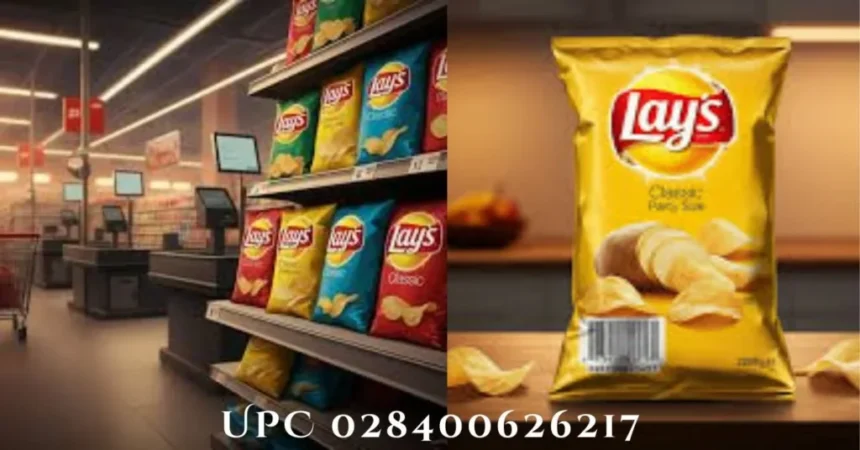Introduction to UPC 028400626217
Have you ever scanned a product at the store and noticed a series of numbers underneath a barcode? That’s more than just random digits; it’s part of something much bigger. One such code, UPC 028400626217, holds significance in the world of retail and inventory management. But what exactly does this sequence represent? As we dive into the realm of UPC codes, you’ll discover their importance in our daily lives and how they impact businesses everywhere. Buckle up as we unravel the mystery behind UPC 028400626217!
What is a UPC Code?
A UPC code, or Universal Product Code, is a unique identifier for products. Designed to streamline the purchasing process in retail environments, it helps track inventory and sales efficiently.
Typically displayed as a series of black bars and numbers, this code can be scanned quickly at checkout counters. Most people encounter these codes on packaging while shopping without realizing their significance.
Each UPC consists of 12 digits that provide essential information about the product. This includes details like the manufacturer’s identity and specific product attributes.
In essence, UPC codes are crucial for maintaining organization within supply chains. They help retailers manage stock levels while providing customers with quick access to necessary information during purchases.
The History and Evolution of UPC
The Universal Product Code (UPC) has a fascinating history that traces back to the early 1970s. Its inception stemmed from the need for an efficient way to manage inventory in retail environments.
Before UPC codes, products were tagged with prices manually. This method was time-consuming and prone to errors. The grocery industry recognized this inefficiency and sought a solution.
In 1974, the first-ever scanned item using a UPC code was Wrigley’s chewing gum at a supermarket in Troy, Ohio. This moment marked the dawn of automated checkout processes.
As technology advanced, so did the design of these barcodes. The original black-and-white patterns evolved into more complex formats capable of encoding additional information.
Today, UPC codes are essential tools for businesses worldwide, streamlining operations while providing consumers with seamless shopping experiences. Their journey reflects ongoing innovation in retail practices.
Understanding the UPC-028400626217 Code
The UPC-028400626217 code is part of a standardized system used to identify products uniquely. Comprising 12 digits, each segment conveys specific information about the item.
The initial digits typically denote the manufacturer. This helps retailers trace back who produced the product and where it originated. Following that, you’ll find a series of numbers that specify the product itself.
Last in line is a single check digit. This number ensures accuracy during scanning processes by verifying if all preceding numbers are correct.
Understanding this structure can aid consumers as well as businesses in managing inventory efficiently. With clear identification comes easier tracking and sales analysis, paving the way for better decision-making across various sectors.
Common Uses of UPC Codes
UPC codes are integral to the retail and inventory management sectors. They streamline the checkout process by allowing cashiers to scan items quickly, reducing wait times for customers.
Manufacturers utilize UPCs for tracking products throughout supply chains. Each code uniquely identifies a product, making it easier to manage stock levels and ensure accurate shipments.
In addition, UPC codes play a significant role in e-commerce. Online retailers rely on these codes to maintain consistent product listings across different platforms. Accurate UPC information helps avoid confusion among consumers browsing various online stores.
Moreover, scanning applications use UPC codes for price checks and promotions. Shoppers can easily access pricing details or discounts simply by scanning the barcode with their smartphones.
Retailers also leverage data from UPC scans to analyze buying trends. This insight aids in marketing strategies that target consumer preferences effectively.
How to Read a UPC Code
Reading a UPC code is straightforward once you know what to look for. The Universal Product Code consists of 12 numeric digits, typically displayed in two parts: the numbers and the accompanying bars.
The first six digits usually denote the manufacturer’s identification number. This identifies the company that produced or sold the item. The next five digits represent the specific product; this differentiates it from other items made by the same company.
The final digit is called a check digit, which helps ensure accuracy during scanning processes. It serves as an error-checking mechanism to confirm that all previous digits have been entered correctly.
When scanning, a laser reads these bar patterns and converts them into numbers using optical recognition technology. Understanding this structure can help consumers and businesses alike navigate products efficiently in stores or inventory systems.
Benefits of Using UPC Codes for Businesses
UPC codes offer numerous advantages for businesses of all sizes. They streamline inventory management, making it easier to track products in real-time. This efficiency reduces the chances of overstocking or stockouts.
Additionally, UPCs enhance checkout speed. With a simple scan, cashiers can quickly identify items, leading to shorter lines and happier customers.
The use of UPC codes also improves data accuracy. Errors from manual entry are minimized, ensuring that sales reports reflect actual transactions.
Moreover, having a standardized code fosters better communication across supply chains. Manufacturers and retailers can easily share information about products without confusion.
Implementing UPC codes can elevate branding efforts as they allow for improved product visibility in retail environments. A well-placed barcode makes it easier for consumers to find what they need while shopping.
Conclusion: The Importance of UPC Codes in Today’s Society
UPC codes are vital in our fast-paced world. They streamline the shopping experience for consumers and businesses alike.
By enabling quick scanning at checkout, UPC codes save time and enhance efficiency. This convenience encourages more people to shop.
For retailers, these codes improve inventory management. Businesses can track sales trends effectively, leading to better stock control and reduced waste.
Moreover, UPCs foster transparency in supply chains. With each product easily identifiable, manufacturers can trace items back through every stage of production.
As e-commerce continues to grow, the relevance of UPC codes only increases. They contribute significantly to logistics and shipping accuracy in online transactions.
In a society where speed and precision matter immensely, UPC codes stand as an unassuming yet powerful tool that drives commerce forward effortlessly.
FAQs
Q: What does UPC 028400626217 represent?
A: UPC 028400626217 is a unique identifier for a specific product. It helps retailers and consumers easily recognize and track the item throughout the supply chain.
Q: How do I find the product associated with this UPC code?
A: You can search online databases or use mobile apps that scan UPC codes to quickly locate information about products linked to this code.
Q: Why are UPC codes essential for businesses?
A: UPC codes streamline inventory management, reduce errors at checkout, and improve overall efficiency in retail environments. They also enhance customer experience by providing quick access to product details.
Q: Can I create my own UPC code for my products?
A: Yes, you can generate your own UPC codes if you register with GS1, the organization responsible for maintaining global standards for these codes. However, it’s vital that they are unique to avoid confusion in the marketplace.
Q: Are there any alternatives to using a UPC code?
A: Yes, some businesses opt for QR codes or other barcoding systems like EAN (European Article Number) as alternatives based on their specific needs.
Q: How do barcode scanners read UPc Codes?
A: Barcode scanners utilize laser technology or imaging sensors to capture light reflected off the printed bars of a UPC symbol. The varying widths of bars correspond with numbers that provide information about the product when decoded by software.
Q: Is it necessary for small businesses to implement UPC coding?
A: While not mandatory, implementing a system of UPC coding can significantly benefit small businesses by enhancing sales tracking and simplifying inventory processes.






